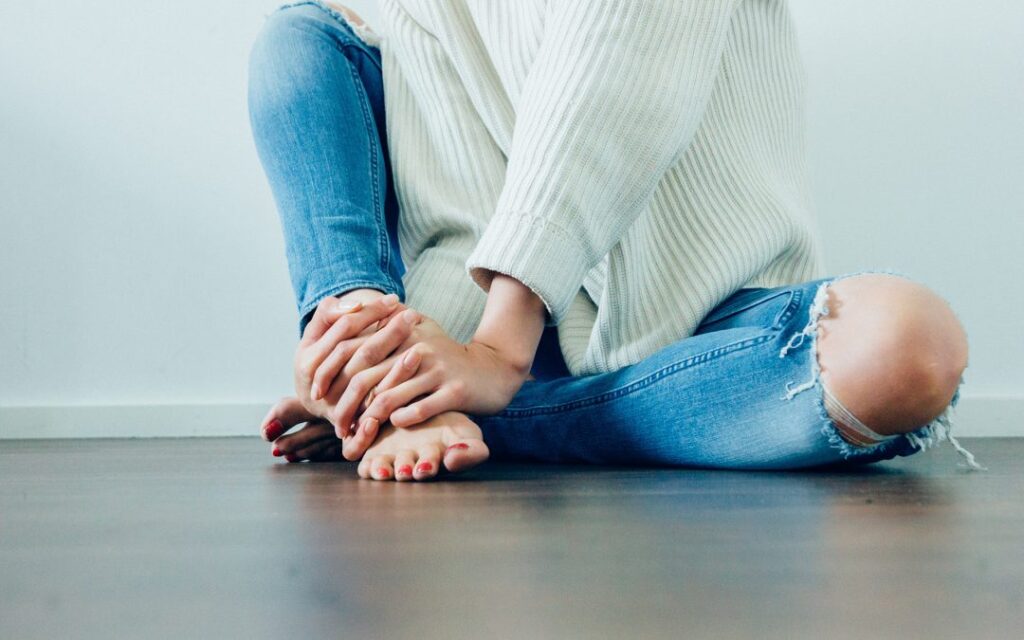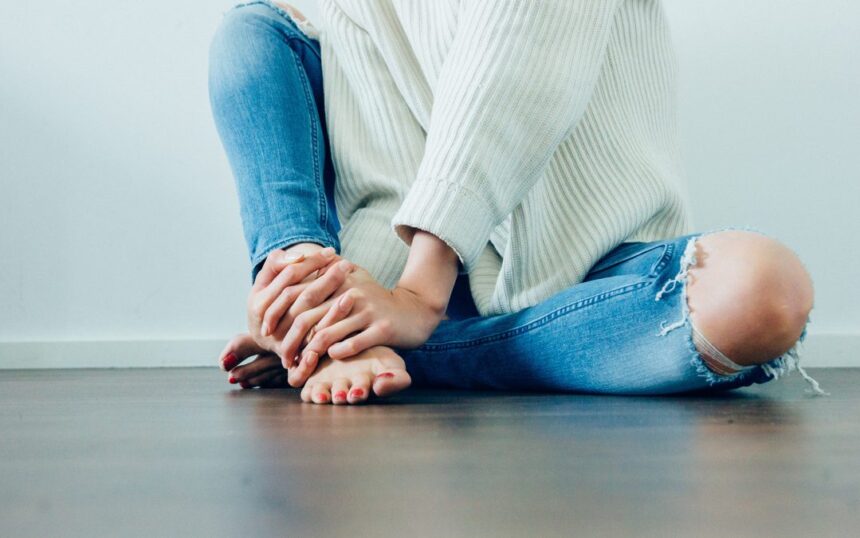
Foot pain can make even ordinary actions difficult. Many disorders, including lumbar radiculopathy (sciatica) and plantar fasciitis, can produce pain or numbness in your feet.
Sciatica is caused by nerve compression in the lower back, the buttocks, or the leg. This compression can cause pain and numbness to radiate from your back and into your lower limbs, including your feet.
Plantar fasciitis may also cause foot pain. It is a type of heel pain caused by inflammation of a band of tissue (fascia) that runs along the bottom of your foot.
If you experience reoccurring numbness, discomfort, or pain in your foot arches, ankles, or heels, you should consult your doctor.
Sciatica and plantar fasciitis symptoms
To further grasp the differences between lumbar radiculopathy and plantar fasciitis, let’s go over the fundamentals of each.
Sciatica
Sciatica symptoms aren’t restricted to your foot. You may also have stabbing or scorching pain in your lower back.
The pain follows the path of your sciatic nerve, which runs from your buttocks to the back of your thigh and down to your foot.
Signs and symptoms of sciatica may include:
- muscle cramps
- stabbing or burning lower back pain
- numbness and tingling in your lower extremities
- weakness in your lower back and lower extremities
Plantar fasciitis
Plantar fasciitis is the most prevalent cause of heel pain seen in doctors’ offices.
Overuse of the plantar fascia, the band of tissue that links your heel bone to your toes, is a common cause of this problem. If you are an athlete or have a job that requires a lot of standing or walking, you may experience overuse.
Symptoms are typically limited to the foot only and may include:
- pain in your foot when you wake up
- stabbing pain in your heel
- pain after standing for long periods
Causes of lumbar radiculopathy and plantar fasciitis
While both sciatica and plantar fasciitis can cause foot pain, the causes are very different.
Sciatica
Sciatica is a term that refers to a group of symptoms caused by a compressed nerve. These symptoms can be brought on by acute or chronic health issues, such as accidents or some types of arthritis.
The following factors can cause lumbar radiculopathy:
- bone spurs
- age
- herniated disk
- pregnancy
- pinched nerve
Between 10% and 40% of people will suffer from sciatica at some point in their lives. Machine operators, truck drivers, and persons in their 40s appear to be most vulnerable.
Plantar fasciitis
Plantar fasciitis, according to doctors, usually begins with microtears in the plantar fascia. Repetitive actions such as walking, running, and weight-bearing generate these microtears. Multiple micro rips eventually aggregate, causing the band of tissue to become irritated and damaged.
Runners and energetic, working persons aged 25 to 65 are most at risk of having this ailment. Plantar fasciitis can also be caused by bone spurs in your heel.
Treatment options
Treatment for Sciatica and Plantar Fasciitis will vary depending on the underlying reason. Both sciatica and plantar fasciitis can occur at the same time.
Sciatica
Sciatica can sometimes go away on its own. However, if your sciatica pain is chronic (lasting more than 12 weeks), you should see a doctor.
To calm the region, your doctor may recommend applying a warm or cold compress. Increasing your core strength, adopting good posture, and avoiding lengthy sitting hours can also help.
If your sciatica persists, your doctor may advise:
- over-the-counter (OTC) NSAIDs or prescription painkillers
- corticosteroids
- muscle relaxers
Plantar fasciitis treatment
Plantar fasciitis is frequently treatable at home.
Conservative therapies include the following:
- applying ice
- resting your feet, avoiding impact activities, and long periods of standing up
- massaging the sore area
You may be recommended to relax as much as possible and stick to this program for 6 weeks or longer while your plantar fascia heals. Your doctor may also suggest over-the-counter NSAIDs for pain treatment or prescribe another medication.
If these therapies do not relieve your discomfort, your doctor may offer a corticosteroid injection to reduce inflammation and pain and promote mobility while your body heals.





